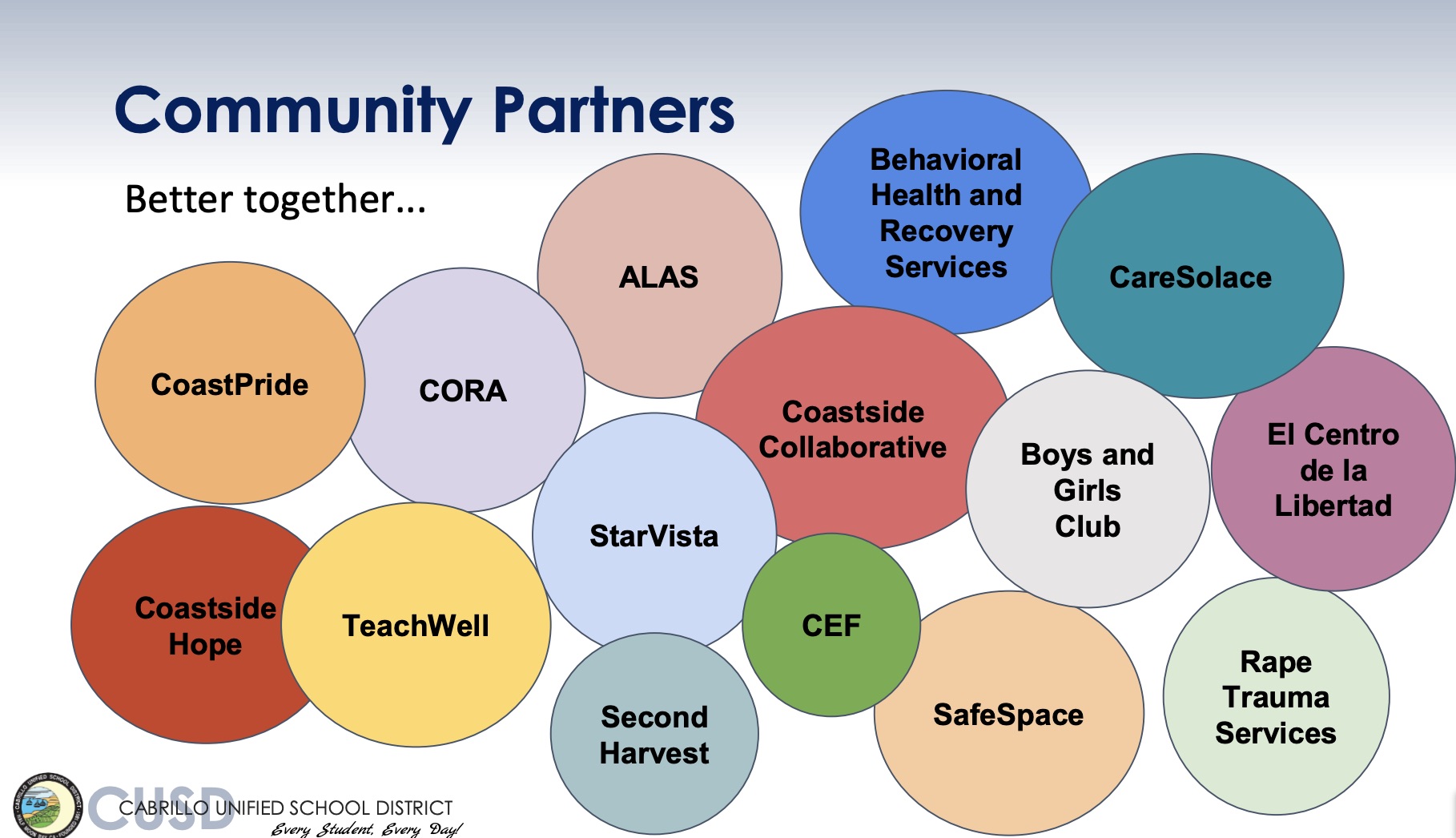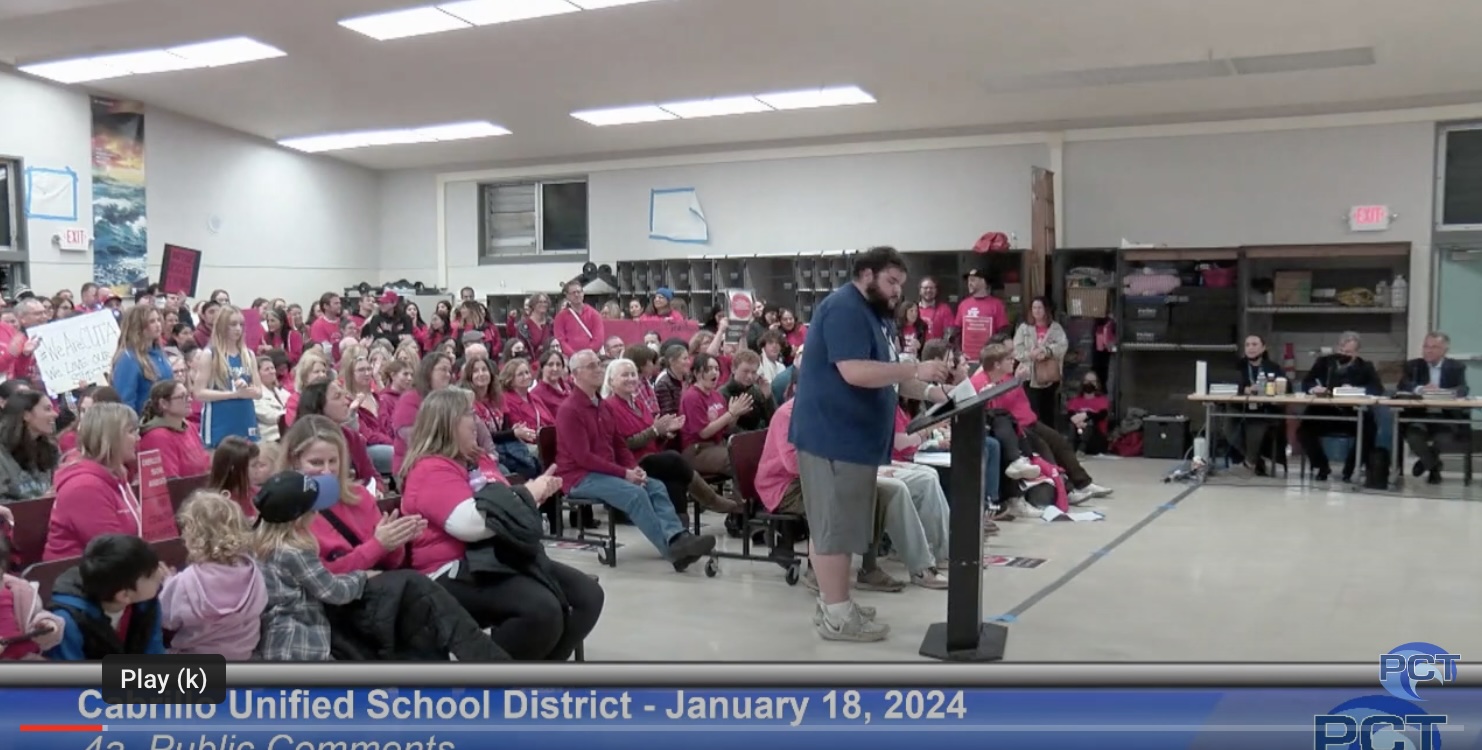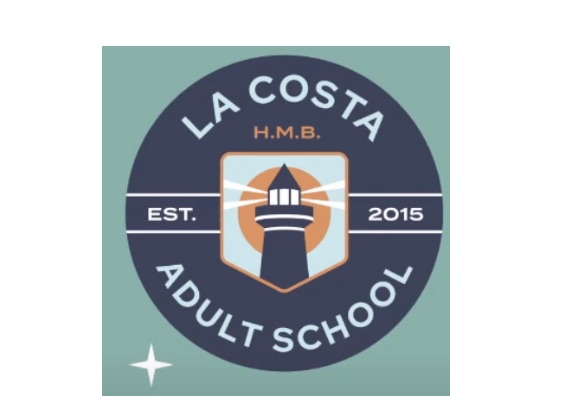|
Getting your Trinity Audio player ready...
|
VIDEO. From the Cabrillo Unified School District (CUSD) meeting on Thursday, October 14th, 2021 at 6:00pm by Zoom.
MEETING DATE: October 14, 2021 TO: Members of the Governing Board
FROM: Randy Rudolph, Director of Technology
CATEGORY: Information
ITEM TITLE: Technology Update: FCC Emergency Connectivity Funds
BACKGROUND INFORMATION The Emergency Connectivity Fund is a $7.17 billion-dollar program to help schools and libraries support remote learning. The Emergency Connectivity Fund was created by the American Rescue Plan Act. Cabrillo Unified School District Technology Director Randy Rudolph applied for this fund, and CUSD was granted $364,317.03, which resulted in the ability to purchase 1076 new Chromebooks for our students.
FISCAL ANALYSIS There is no financial impact to the General Fund.
RECOMMENDATION This item is presented for information only.
The FCC’s Emergency Connectivity Fund (ECF) is a $7.17 billion program that will help eligible schools and libraries provide the tools and services their communities need for remote learning during the COVID-19 emergency period. The Emergency Connectivity Fund will help provide relief to millions of students, school staff, and library patrons and will help close the Homework Gap for students who currently lack necessary Internet access or the devices they need to connect to classrooms.
Here are some important things to know about the Emergency Connectivity Fund:
What Is the Emergency Connectivity Fund?
- The Emergency Connectivity Fund is a $7.17 billion program to help schools and libraries support remote learning. The program will provide funding to schools and libraries for the reasonable costs of eligible equipment and services for off campus use by students, teachers, and library patrons who lack connected devices such as WiFi hotspots, laptop or tablet computers and/or lack broadband access during the pandemic.
- The Emergency Connectivity Fund was created by the American Rescue Plan Act.
Who Is Eligible to Receive Funds Through Emergency Connectivity Fund Program?
- Schools, libraries, and consortia of eligible schools and libraries (e.g., regional or statewide groups of schools or libraries that apply together) that are eligible for support under the FCC’s ERate program, are eligible to request and receive support through the Emergency Connectivity Fund program. Tens of thousands of schools and libraries across the country receive support for their on-campus broadband connectivity needs through the E-Rate program.
- Tribal libraries eligible for support under the Library Services and Technology Act are also eligible for support under the program.
- Schools and libraries eligible for program support do not need to be current E-Rate participants. Eligible entities that have not applied for E-Rate support should be prepared to demonstrate eligibility as a school or library under the program rules during USAC’s application review. What Equipment and Services Are Covered by the Emergency Connectivity Fund?
- The following types of equipment purchased for off-campus use by students, school staff, and library patrons who would otherwise lack sufficient connectivity to engage in remote learning are eligible for support:
- Laptop and tablet computers
- Wi-Fi hotspots o Modems (including air cards)
- Routers o Devices that combine a modem and router.
- Schools and libraries can also receive funding for commercially available broadband Internet access service that provides a fixed or mobile broadband connection for off-campus use by students, school staff, or library patrons who would otherwise lack access to connectivity sufficient to engage in remote learning.
In limited circumstances where a school or library can demonstrate that there are no available service options sufficient to support remote learning for its students, school staff, or library patrons, the ECF Program may support the construction of new networks and the equipment needed to receive datacasting services.
What Are the Reasonable Support Amounts for Eligible Equipment and Services?
- The program will reimburse eligible schools and libraries a maximum of $400 for each laptop or tablet, and a maximum of $250 for Wi-Fi hotpots.
- Schools and libraries may buy more expensive laptops, tablets, or Wi-Fi-hotspots, but they can only be reimbursed up to $400/$250.
- For other eligible equipment and services, USAC will review costs to ensure they are reasonable.
Can a Student Receive Emergency Connectivity Fund Support and Receive Emergency Broadband Benefit Support at the Same Time?
- No, the ECF will not reimburse for equipment and/or services that are paid for by another federal pandemic relief program.
- But a student could receive broadband access service through the Emergency Broadband Benefit and a connected device through the Emergency Connectivity Fund.
How Can Schools or Libraries Apply?
- A second ECF application filing window will open on September 28, 2021 and close on October 13, 2021. During this second filing window, eligible schools, libraries, and consortia of eligible schools and libraries, can submit requests for funding to purchase eligible equipment and services between July 1, 2021 and June 30, 2022.
- The Universal Service Administrative Company (USAC) is the administrator of the ECF Program and will review applications.
- Interested schools and libraries can find more information and apply at www.emergencyconnectivityfund.org.
How Can You Stay Informed?
Sign up to stay informed about the Emergency Connectivity Fund and receive invitations for future training sessions.
Highlights From the Initial Filing Window
- The ECF initial application filing window opened on June 29, 2021 and closed on August 13, 2021.
- The FCC received requests for $5.137 billion to fund 9.1 million connected devices and 5.4 million broadband connections
- Applications came in from all 50 states, American Samoa, Guam, Northern Mariana Islands, Puerto Rico, U.S. Virgin Islands and the District of Columbia
- You can view demand by state: https://www.fcc.gov/reports-research/maps/ecf-state-demand/
Cabrillo Unified School District (CUSD) Meetings ~ 2nd Thursday @ 7:00pm
Watch remotely. Comments and questions by email.
Cabrillo Unified School District Website
Meeting, Dates, Agendas, Webinar Link and More…
 The Cabrillo Unified School District is located just south of San Francisco on the beautiful Pacific Coast. The District was established on July 1, 1965 and encompasses an area of approximately 135 square miles. The District currently operates four elementary schools, one intermediate school, one high school, a continuation school, and an adult education program.
The Cabrillo Unified School District is located just south of San Francisco on the beautiful Pacific Coast. The District was established on July 1, 1965 and encompasses an area of approximately 135 square miles. The District currently operates four elementary schools, one intermediate school, one high school, a continuation school, and an adult education program.
The mission of the Cabrillo Unified School District – an exemplary learning community committed to valuing our distinct cultural identities – is to develop critical thinkers and socially responsible citizens who actively participate in their individual learning and development and are fully prepared to embrace their next challenge. We accomplish this by utilizing our unique natural resources and engaging the entire Coastside community and its partners in providing a rich and academically rigorous curriculum in a safe and nurturing environment.
Board Members
KIMBERLY HINES
President
Term: 2016-2020
HinesK@cabrillo.k12.ca.us
LIZET CORTES
Vice President
Term: 2018-2022
CortesL@cabrillo.k12.ca.us
MARY BETH ALEXANDER
Clerk
Term: 2018-2022
AlexanderM@cabrillo.k12.ca.us
FREYA MCCAMANT
Member
Term: 2018-2022
McCamantF@cabrillo.k12.ca.us
SOPHIA LAYNE
Member
Term: 2016-2020
LayneS@cabrillo.k12.ca.us
SEAN MCPHETRIDGE
Superintendent
McPhetridgeS@cabrillo.k12.ca.us
ROSIE ACOSTA
Administrative Assistant to the Superintendent
AcostaR@cabrillo.k12.ca.us
(650) 712-7112






